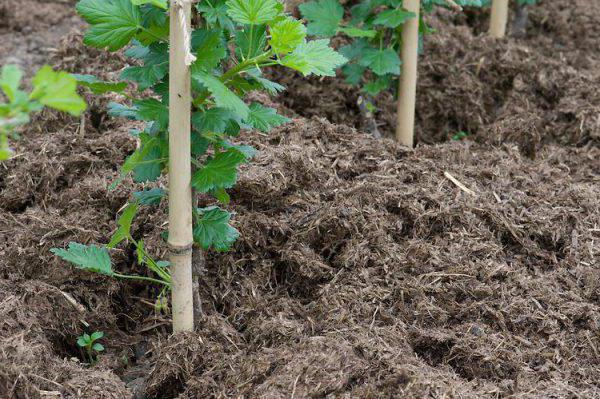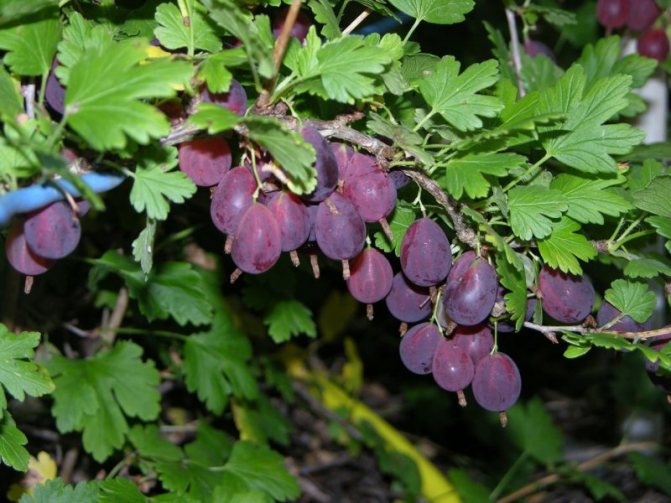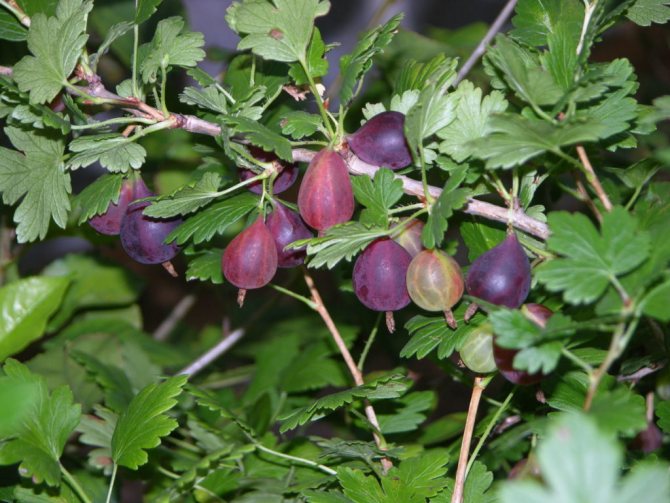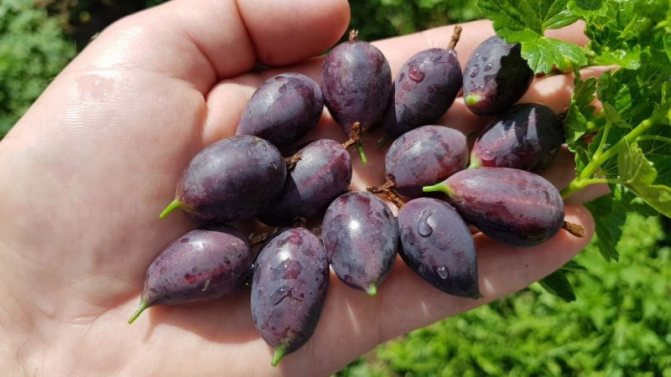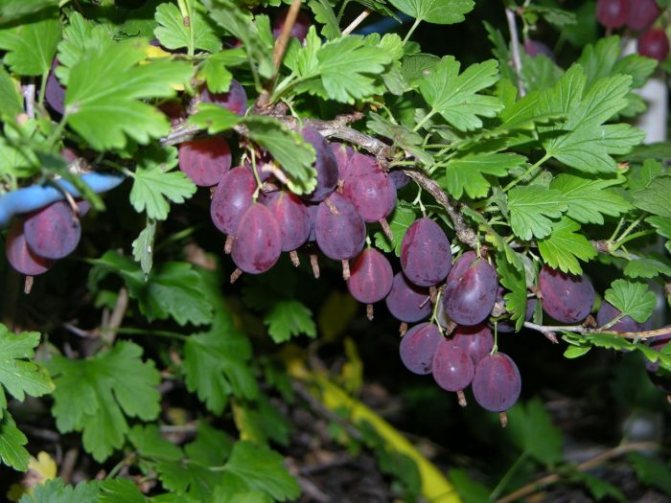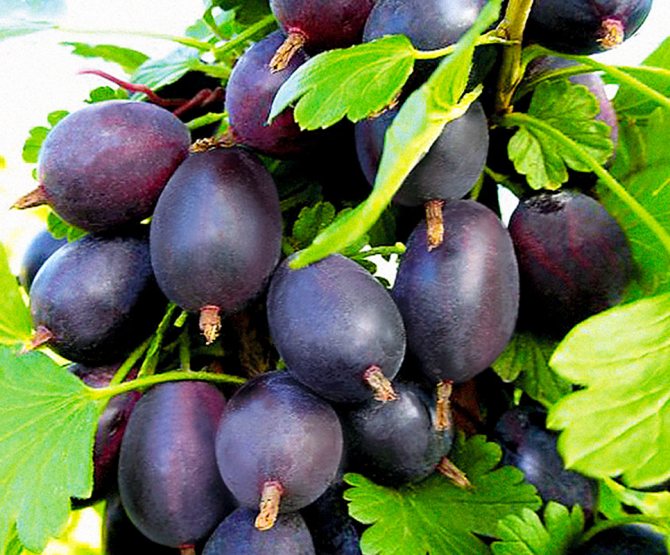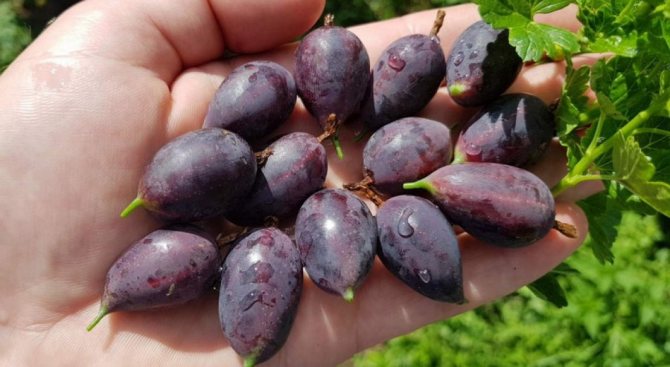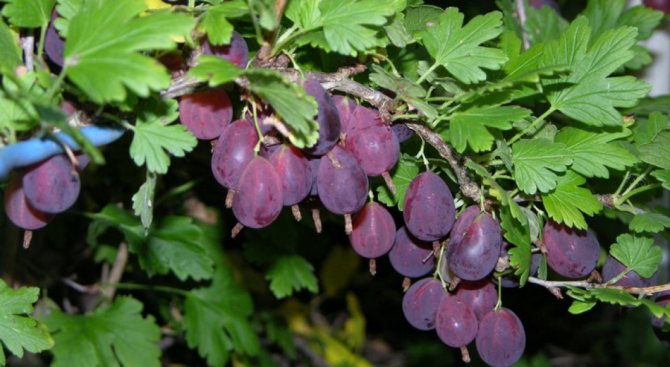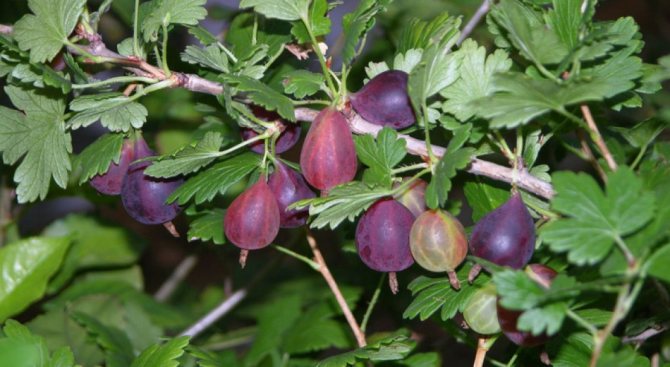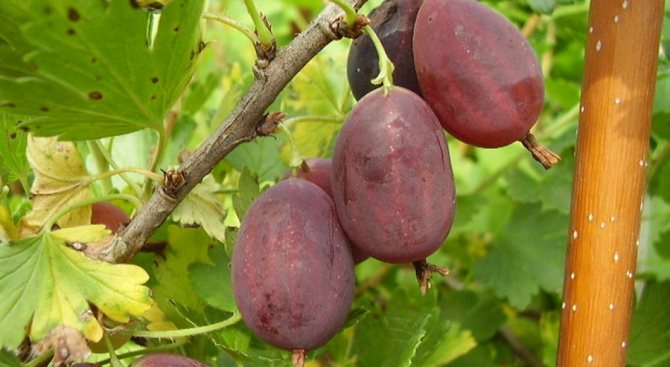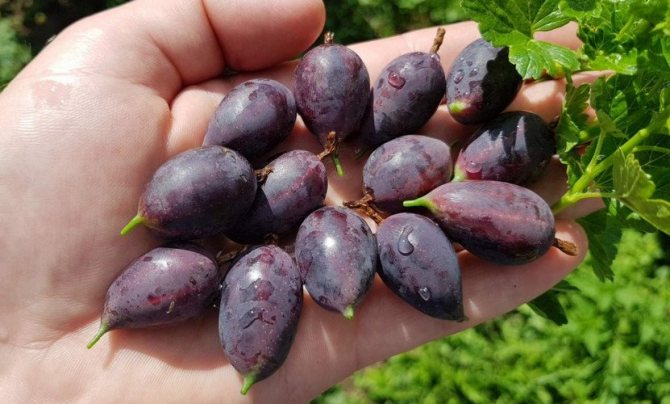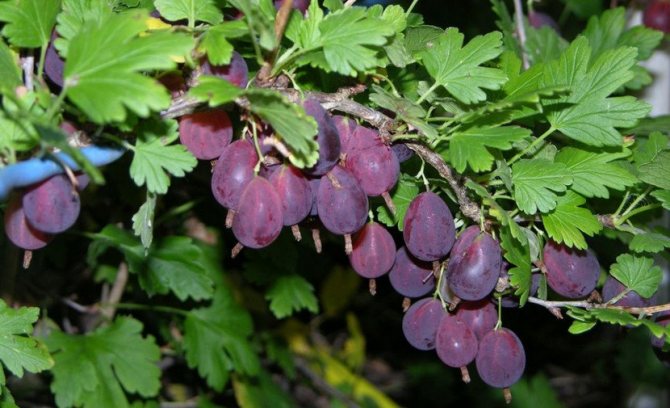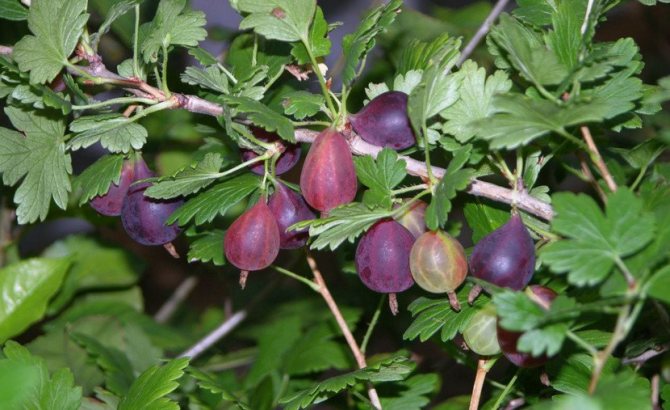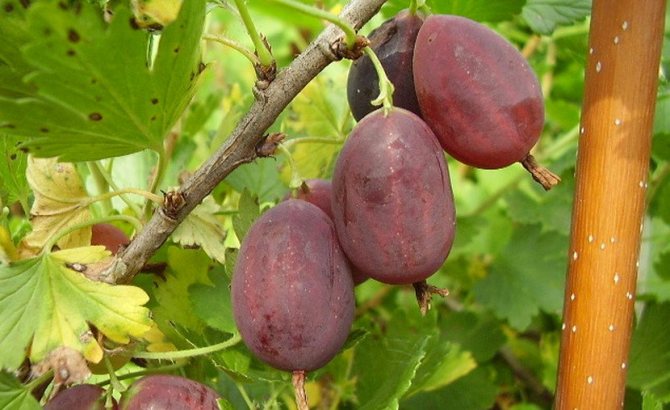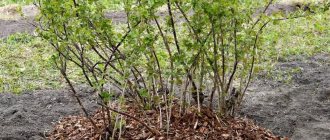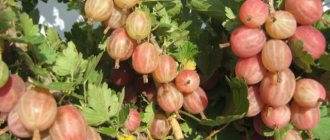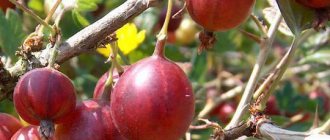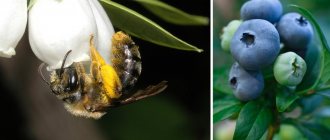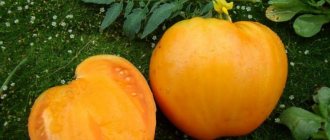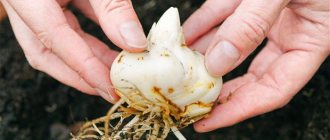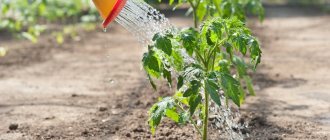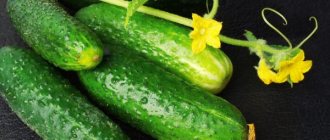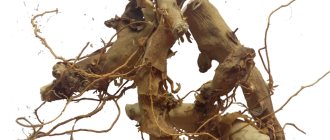The Grushenka variety is one of the most unpretentious gooseberries, the bush brings a rich harvest, so it will delight the gardener for many years. The main advantage of the plant is the absence of thorns, which greatly simplifies the collection of berries.
Gooseberries Grushenka have a thick skin, so they are easy to store and transport.
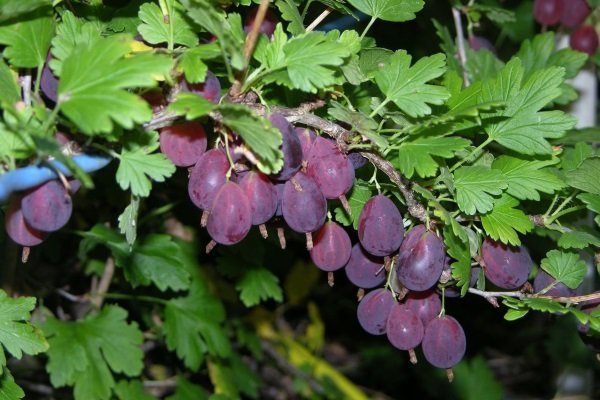
Grushenka is a low-growing and frost-resistant gooseberry variety
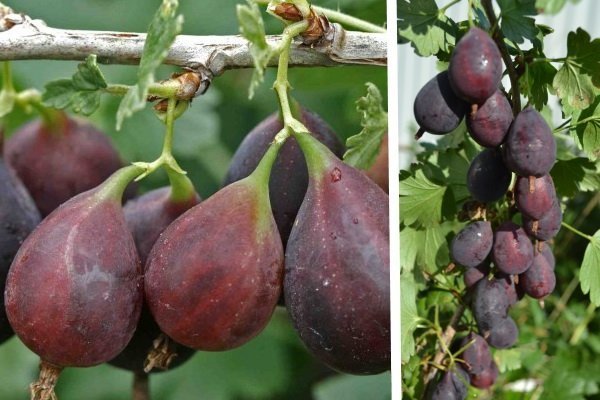

Gooseberry Grushenka has no thorns, so harvesting becomes more pleasant
Breeding history
The scientist I.V. Popova worked on the development of a new variety at the All-Russian Institute of Selection and Technology of Horticulture and Nursery. For selection were selected - Moscow red, Northern captain and form 595–33, as a result of crossing which it was possible to obtain an unpretentious, studless bush with fruits of an unusual shape and color.
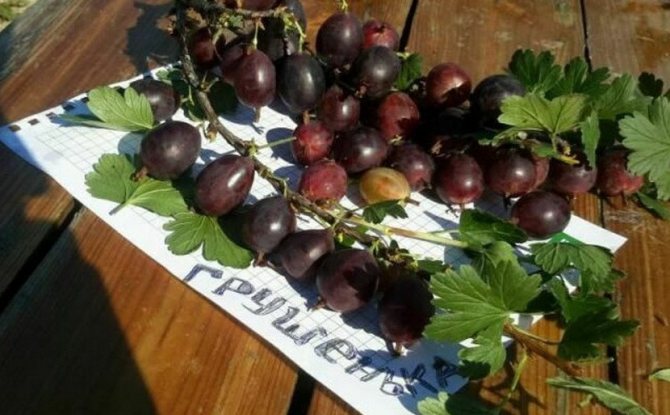

How to plant gooseberries?
This finicky plant needs certain growing conditions. It loves a lot of light and does not bear fruit in shaded areas. Gooseberry Grushenka does not like excess moisture, so this plant should not be planted in waterlogged areas or in those located in the lowlands. It is not recommended to plant a plant in places where there was previously a currant or gooseberry bush. This is due to the fact that previous plants could have had a disease such as glass or scabbard, and a young bush can easily pick up these diseases. It takes root very well and grows in those areas where vegetables were previously sown.
How to plant gooseberries? Before planting, it is necessary to clear the soil of all weeds. The most favorable time for planting is early autumn. First, pits with a diameter of more than 40 cm are dug. Fertilizers must be poured into it, since after planting the young plant will need abundant feeding. How to feed gooseberries? As a fertilizer, humus or compost is applied under one bush. You can put 200 g of superphosphate or twice as much wood ash. If the gooseberry sits on acidic soil, then it is additionally recommended to add 150 g of chalk. You can use the same amount of dolomite flour instead.
It is necessary to carry out constant watering. In dry weather, he will need two buckets of water. Further, the soil is mulched with dry lawn grass or humus. If several seedlings are planted at the same time, then holes for them are dug at a distance of 2 m.
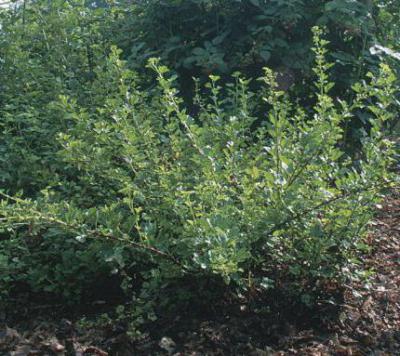

Feature, description
Grushenka's bush grows compact, low, slightly spreading, but with strongly branching shoots. The drooping branches bear fruit along the entire length with berries of a plum-purple color and an unusual elongated-drop-shaped shape, reminiscent of a pear. Not too large, they "stick around" the shoots of the bush so densely that sometimes the leaves are not visible. A remarkable feature of the variety is the complete absence of thorns, which greatly facilitates plant care. The variety is fast-growing and already at the age of three begins to delight with the harvest.
Video: Thornless gooseberry Grushenka
Reviews of gardeners about the variety Grushenka
★★★★★
Vladimir, 42 years old, programmer, Uzhgorod. This is the most resistant gooseberry variety I have seen. He did not hurt me at all.For the 8th year in a row, it brings a large harvest in the form of small but tasty berries. The only drawback is that due to the gravity of the berries, the twigs lie on the surface of the soil, so you have to constantly build and install supports.
★★★★★
Irina, 57 years old, cameraman, Novosibirsk. The Grushenka variety has taken root well in our difficult climate. The whole family love to make canning from berries, compotes are especially tasty. No bush in the garden has ever been so busy as this one.
Hide
Add your review
The Grushenka variety is the leader among all gooseberry varieties. Almost every summer resident of Russia grows this unpretentious berry bush in his garden. Caring for gooseberries will not force you to spend a lot of effort, you just need to adhere to certain rules in order to maintain a strong immunity in the bush and high yields.
0
Pros and cons
Gooseberry Grushenka is unpretentious enough to successfully grow and bear fruit even with a novice gardener. But, like most other varieties, it painfully perceives waterlogging of the soil and in wetlands can die from fungal infections. Some inconvenience is caused by the need for annual pruning and garters of branches weighed down with a bountiful harvest.
- But these disadvantages cannot outweigh the prevailing advantages of the variety, among which are noted:
- lack of thorns;
- resistance to infections;
- high frost resistance;
- early maturity;
- the ability to grow on almost any soil;
- good keeping quality and transportability.
Did you know? The gooseberry is a relative of the currant. After crossing them, a yoshta hybrid was obtained, characterized by high growth, berries with a nutmeg taste, lack of thorns and resistance to diseases inherent in the parent plants.
Drought resistance, frost resistance
The shrub perfectly tolerates heat and dry periods, but without additional moisture, the berries are formed small. The high frost resistance of the variety allows it to endure frosts down to -30⁰C even without winter shelter, and the flowers and ovaries are not afraid of recurrent spring frosts. Gooseberry has a powerful immunity to common viral and fungal diseases.
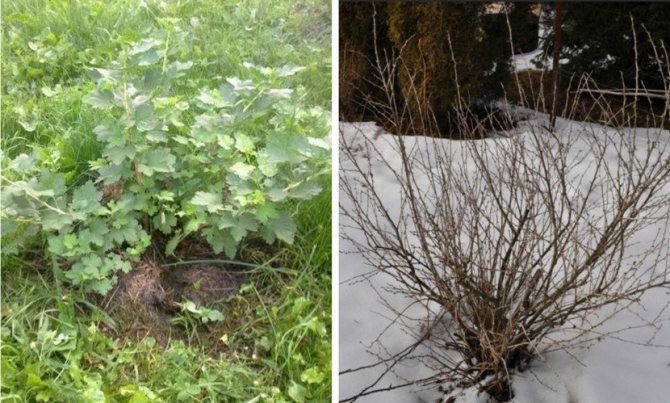

Productivity and fruiting
Grushenka's berries are not the largest, their weight is, on average, 4 g. But the small size of the fruit is compensated by the abundant harvest - up to 6 kg per bush. Full ripening begins in August, although harvesting can begin as early as the second half of June at the stage of technical ripeness. Fruiting continues until the plant is 20 years old. Sweet and sour berries, covered with a thick skin, are not prone to cracking, shedding and have high rates of transportability and storage. A universal variety with a tasting score of 4.1-5 points on a five-point scale.
You may be interested to know when gooseberries begin to bear fruit after planting.
Advantages and disadvantages of this variety


Gardeners highlight its unpretentious nature. And also sweet and sour fruits. This specimen can be planted in almost any region.
Benefits of this variety:
- High resistance to frost.
- This variety lacks thorns and thorns.
- The variety is resistant to various diseases.
- It tolerates dry and hot conditions very well.
- High productivity.
- The fruits tolerate transportation well.
- One shrub can bear fruit for up to 20 years of its life.
- Berries of this variety are great for harvesting. You can prepare from them: jam; confiture; jam; compote. The berries will retain their integrity even after heat treatment.
TO disadvantages varieties include:
- The bush needs a timely garter so that the branches do not get too close to the ground.
- The berries are not very large.
- This variety is very vulnerable to waterlogged soil.
Landing
It is necessary to prepare in advance for planting a shrub. The success of the event largely depends on the choice of location, adherence to deadlines and process technology.
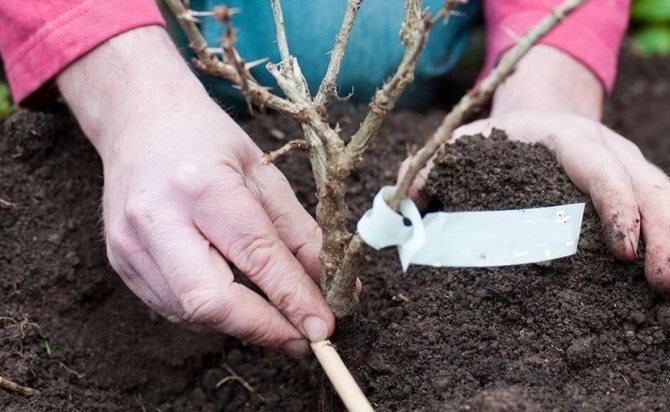

Timing
Gooseberry planting can be carried out in the spring - before the start of sap flow, or in the fall. The autumn period is considered more favorable. The optimal period is 1–1.5 months before the onset of frost. This is due to the need to build up the root system that can survive the winter.
Check out what you can plant next to gooseberries.
Choosing the right place
The unpretentiousness of the variety allows you to grow it on various types of soils. For planting, choose well-lit or penumbra areas with protection from northern winds. Flooded lowlands are not suitable for gooseberries. The bushes are placed immediately on a permanent place of growth, since adult plants do not take root well after transplantation.
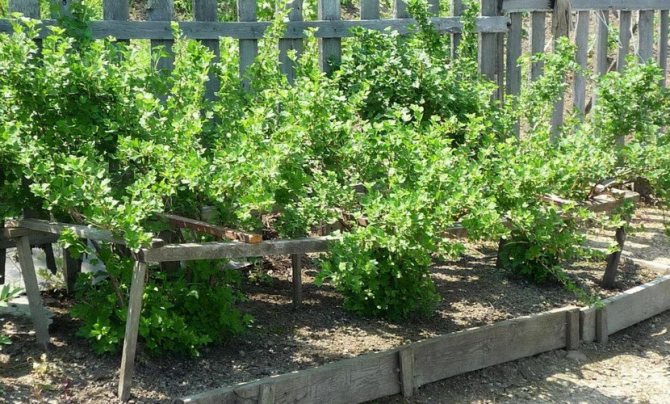

Places along fences are well suited, but it must be borne in mind that other varieties of gooseberries or different types of currants are not the predecessors of the culture.
Soil preparation consists in deep digging and applying 15 kg of humus, 2 kg of phosphate rock or dolomite flour and 0.4 kg of potassium salt for every 10 m². Weeds are carefully removed along with the roots.
Selection and preparation of planting material
For planting, one-year or two-year-old seedlings are purchased, without signs of disease and pest damage, with well-developed fibrous roots. Skeletal root processes should be 10–15 cm long and shoots 30–40 cm long.
Dry or damaged fragments are cut with a pruner. Before planting, the root ball is soaked for 12 hours in a solution of "Kornevin" or "Heteroauxin". The leaves are removed and the shoots are shortened to 5-6 buds. Too young seedlings (less than a year old) do not need pruning.


Landing scheme
The planting instructions include a description of the following steps.
- On the selected site, 2–4 weeks before planting young specimens, holes are dug with a diameter of 40 cm, a depth of 50 cm and a distance of 1–1.5 m between them.
- If the soil has not been fertilized in advance, a mixture of earth and humus is poured onto the bottom of the pit with the addition of 200 g of wood ash and 50 g of superphosphate and potassium salt each.
- A small layer of ordinary turf soil is poured over the enriched soil, watered abundantly with water and left for 2–4 weeks to shrink.
- After the specified time, small mounds are poured in the holes, prepared seedlings are installed on them and the roots are straightened.
- They fill up the soil, slightly tamping and deepening the seedling 5–6 cm above the level of the root collar.
- The bush is abundantly watered with settled water and the surface of the soil is mulched with hay, sawdust or dry grass.
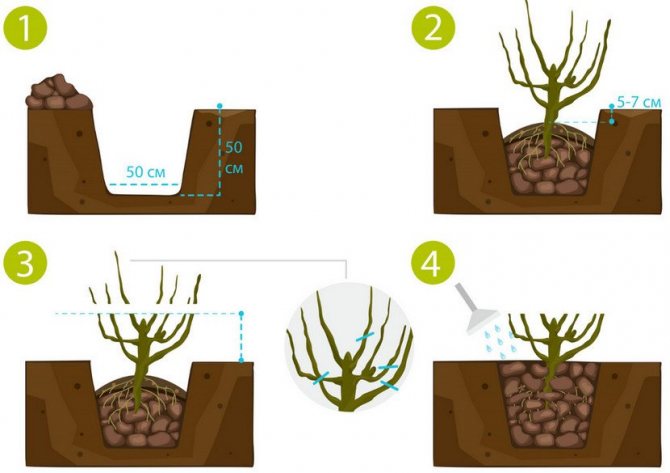

Fertilizers and feeding
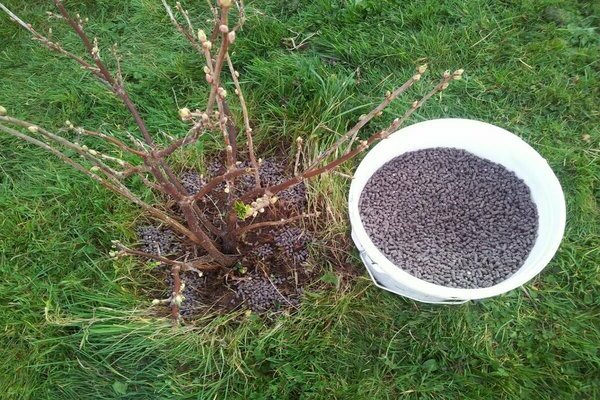

This variety does not need too frequent fertilization and feeding. There will be enough universal complex mineral fertilizers for fruit and berry crops. They need to be applied to the soil once or twice a year. Re-application of top dressing directly depends on the fertility of the soil. As well as the state of the bush.
Those fertilizers with the help of which the planting hole was stratified, as a rule, there is enough bush for active growth. As well as development throughout the season. If the soil has a high percentage of acidity, this can be reduced by using: dolomite flour; wood ash. Ash should be from clean wood. That is, not painted, not varnished. And also not glued. In the autumn, a remedy such as superphosphate can be added under the gooseberry bush.
Features of seasonal care
The stability of Grushenka's fruiting makes it possible for the gardener to get an average yield of gooseberries without organizing any additional care. But the plant will respond to the application of minimal effort by increasing the quality of the fruits and improving their taste.
Did you know? Gooseberry - very
«
plastic
»
culture, it can be grown in the form of a tree (standard form). The berries on such a plant are larger and sweeter than on a classic-shaped bush.
Soil care
With sufficient rainfall, the shrub does not need additional irrigation. In arid climates, it is enough to provide 4 waterings per season: during flowering, during the formation of ovaries, during ripening of berries and before the onset of cold weather to prepare for wintering. It is recommended to use water that is separated and warmed up to ambient temperature. For irrigation of each adult plant, 2 buckets of water are needed, which is poured over the entire area under the crown of the bush. Young seedlings of spring planting need weekly watering for better rooting.
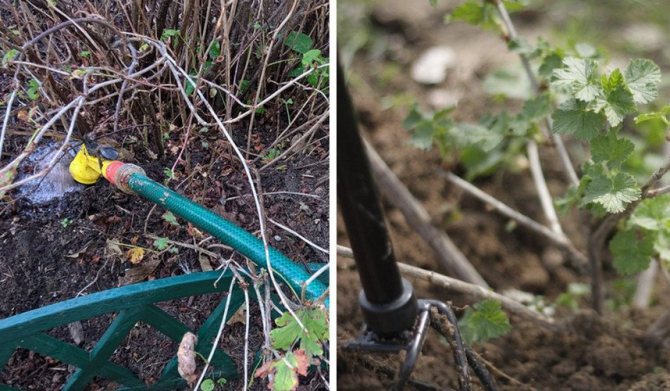

The soil around the bush is kept clean, the weeds are weeded on time. To improve air exchange, light soils are loosened, and heavy soils are dug to a depth of 10-15 cm. Loosening is carried out after showers or planned irrigation, up to 4 times during the growing season.
Preventive treatment
Supporting the plant's own immunity by providing the necessary care increases the chances of successfully resisting various infections and pests. Growing on heavy, swampy and acidic soils, insufficient illumination and thickening of branches in the absence of pruning, significantly worsens the condition of the shrub.
To prevent the defeat of gooseberry diseases, preventive spraying of plantings is carried out in the spring - at the beginning of the growing season and after harvesting, in early autumn. For treatments, a solution of copper sulfate or systemic chemicals are used according to the manufacturer's instructions.
You may be interested in learning more about how to fertilize gooseberries in fall and spring.
Top dressing
Starting from the third year after planting, Grushenka's gooseberry needs additional feeding. In the spring, before the beginning of the growing season and during the growth of the ovaries, 10–20 g of urea, ammonium nitrate and ammonium nitrate are added to each square meter of the bed.
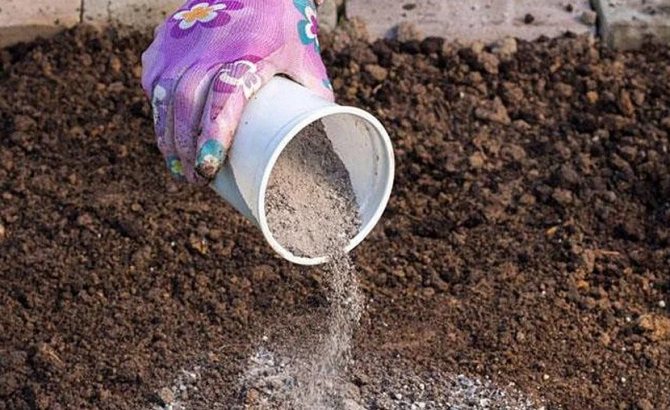

When the berries ripen, the shrub is fed with wood ash at the rate of 400 g per bush.
After harvesting, the plants are fertilized with 45 g of superphosphate and 30 g of potassium salt per 1 m². To prepare the gooseberries for wintering, during the last digging, compost is embedded in the soil.
Support
The long flowing shoots of Grushenka cannot hold heavy sweet berries ripening along their entire length and gradually fall on the ground, where the plant begins to attack microorganisms, pathogens of fungal and viral infections, worms, slugs and insects. Thus, the garter of the bush branches is necessary to preserve the harvest, and also serves as a means of protection and prevention of diseases.
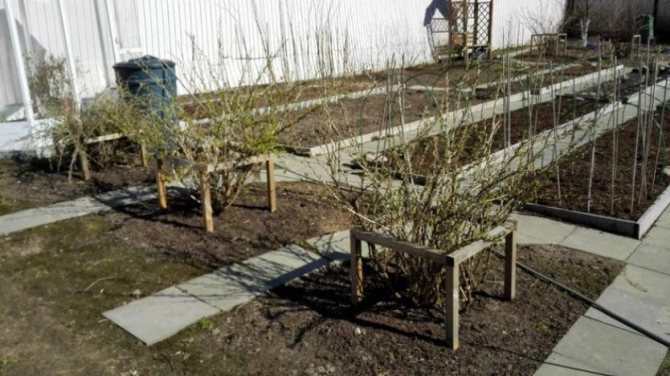

For the construction of a support around the crown of the bush, wooden beams or metal rods are driven in, on which strips or rigid wire are fixed in a circle. As the gooseberry grows, the supports are shifted, increasing the support area.
Pruning
Grushenka has the ability to intensively grow many side branches, which not only bear fruit and increase productivity, but also thicken the inner space of the bush, making it difficult for air and the sun to access. In such an environment, favorable conditions are created for the occurrence of diseases and pest attacks, and the quality of the crop deteriorates.
Important! Without regular pruning of shoots, Grushenka berries grow small and sour.
In the first 5 years of the gooseberry's life, formative pruning is carried out in late autumn. All weak, twisted, sick and growing branches inside the bush are cut off. Leave 3-5 strongest branches, which pinch the tops. In an adult, formed plant, 5 main and up to 20 lateral branches of different ages support the vegetation.Subsequently, the shrub needs sanitary pruning of dried, frozen and damaged branches, as well as rejuvenating pruning of old, fruiting shoots.


Suitable garter support
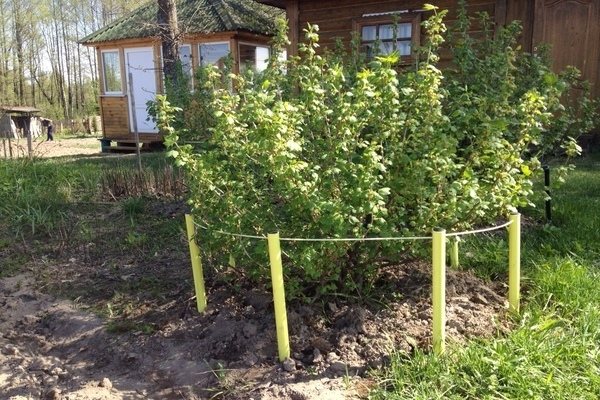

Young and thin shoots of the plant must be tied up. Because they can break due to the too heavy weight of the berries. And also from windy gusts. To do this, at a distance of 15 centimeters from the plant bush, you need to stick three small sticks. Then tie them with a rope. And attach the branches of the bush between the pegs. And also adult specimens need a garter.
Adult branches tend to lean towards the ground due to the weight of the berries ripening on them. What can cause fungal infections. The support needs to be adjusted as the bush grows and develops. During the ripening period of the berries, the bush will need additional support.
Reproduction methods
Grushenka, like other varieties of shrubs, is propagated vegetatively - by cuttings and layering. For grafting from an adult plant in July - August, branches about 15–20 cm long are cut, and the sections are treated with Heteroauxin or Kornevin. Cuttings are dropped into loose nutrient soil, leaving 2-3 buds on the surface. The sprouts are watered regularly until new shoots begin to grow from the buds.
Reproduction by layering is a more common and gentle way of propagation. The annual shoots located in the lower part of the bush are bent to the ground and fastened with a bracket approximately in the middle. The brace should fix the stem firmly. The attachment point is sprinkled with soil, leaving the end of the branch free, and watered regularly. After rooting and the appearance of young shoots, the layers are cut off from the mother plant and planted in a permanent place.
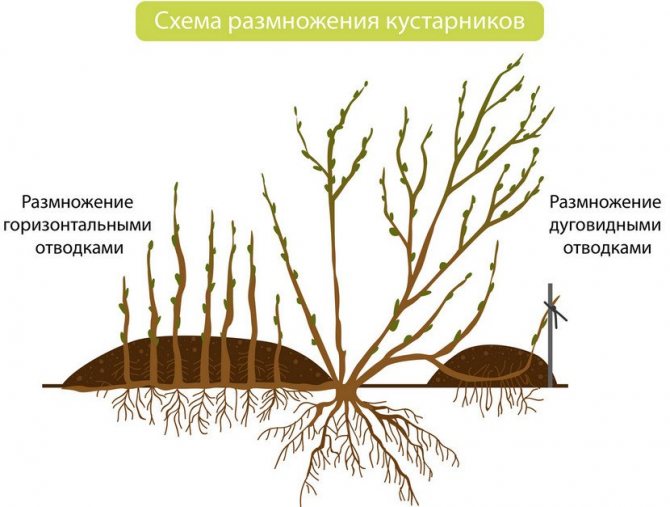

Gooseberry Grushenka: yield
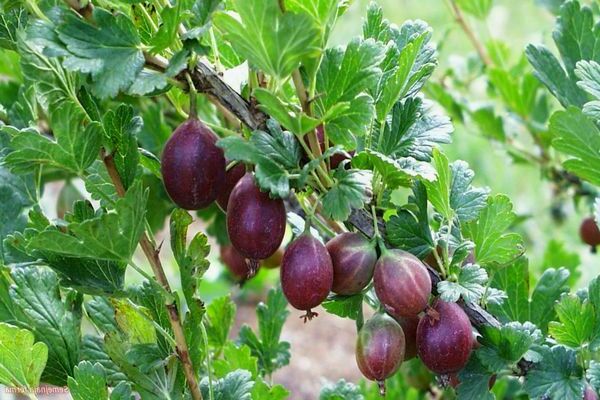

This variety seems to be strewn with fruits around the perimeter of its branches. You can also highlight the ability to quickly build up a young shoot, on which fruit buds will flaunt. Berries are formed both on young shoots and old ones. The average number of kilograms that can be collected from one bush is six. Most gardeners produce a timely garter, since the berries are very heavy and bend the branches straight to the ground. The weight of one berry is usually 4-5 grams.
Diseases and pests
The gooseberry variety Grushenka is distinguished by good health, but in some cases, despite care and prevention, it can be affected by fungal infections. At the first signs of a disease, plants are treated with the following means:
- a solution of 1 liter of milk whey and 20 drops of iodine (per 10 liters of water);
- a suspension of 10 g of baking soda and 50 g of laundry soap (for 10 liters of water);
- infusion of 300 g of ash and 10 liters of water;
- a solution of 50 g of soda ash and 20 g of liquid soap, dissolved in 10 liters of water.
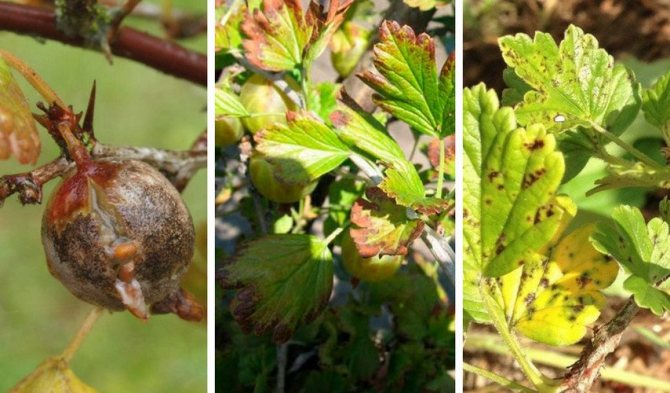

Insect attacks use:
- infusion: 300 g of garlic in 10 liters of water;
- fresh wormwood steamed with boiling water in a ratio of 1: 1 and infused for a day;
- tobacco infused for 2 days, steamed, at the rate of 400 g per bucket of boiling water with the addition of 40 g of soap.
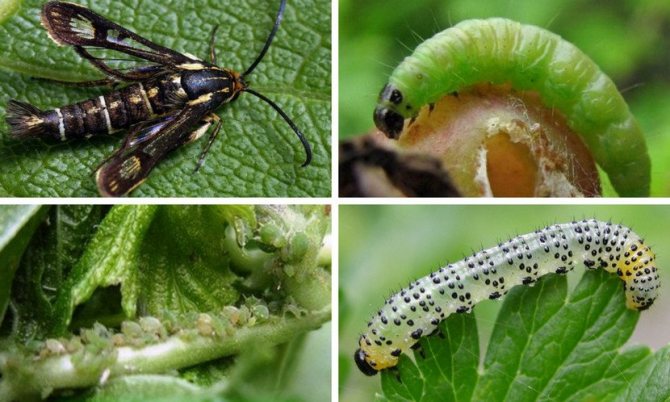

If folk remedies are ineffective, use systemic chemicals and insecticides according to the manufacturer's instructions, but the crop of the current season may become unusable. In severe, neglected cases, diseased plants are dug up and destroyed.
Crown pruning rules
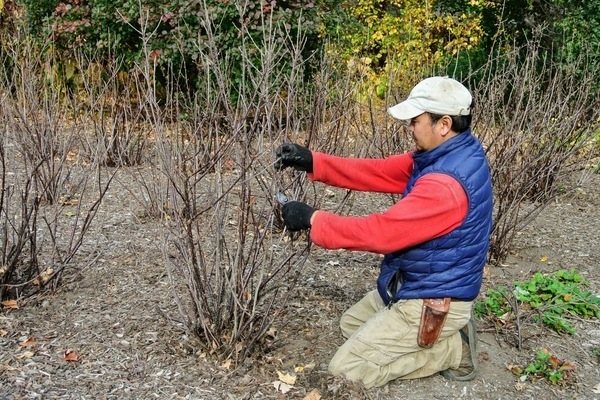

This variety requires two pruning procedures: sanitary pruning; formative pruning. The best time for pruning is early spring. It is recommended to tame the height of the bush by 30%. And also remove all damaged, weakened, dry, not developing, painful branches.
This gooseberry variety grows young shoots very quickly. It is very important to ensure that the bush is not too thickened.Because this threatens the development of fungal infections due to the high percentage of air humidity inside the bush. And also it can threaten with a lack of lighting. If the bush lacks light, then its berries will lose their taste.
Preparing for winter
At the end of the season, after pre-winter watering, feeding and pruning of shrubs, the remains of vegetation are removed from the site, preventive spraying is carried out and the soil is dug up. The high frost resistance of the variety allows adult bushes to winter without additional shelter. In a snowy winter, the plants are covered with snow, raking snowdrifts onto the gooseberry, and in the absence of precipitation, the soil is mulched under the crown of the bush with humus or peat (10 cm layer). Young seedlings must be additionally wrapped with spruce branches or other covering material, and the soil above the roots must be mulched with a layer of 15–20 cm.
Did you know? Green gooseberries are popular in Europe as an additive to soups and sauces, and in Russia they were pickled, salted and served with meat and poultry.
What to look for when choosing seedlings
In order for the gooseberry to delight you for many years with its delicious fruits, you must, first of all, be able to choose good quality seedlings. When choosing seedlings, the first thing you need to pay attention to is the condition of the roots and root collar (a place just above the beginning of the roots). Small roots should be thick and lush, without any damage and even more peeling (this indicates freezing of the roots).
Check out other fruit bushes as well: alder leaf, goji, grapes, raspberries, currants, sea buckthorn, sunberry and rose hips.
Look closely at the root collar - tinder fungus most often develops in this place. Also pay attention to how exactly the seller's seedlings are located - the roots should not be located in direct sunlight. The roots of the seedlings should either be placed in a box with soil, or at least be covered with a wet cloth.
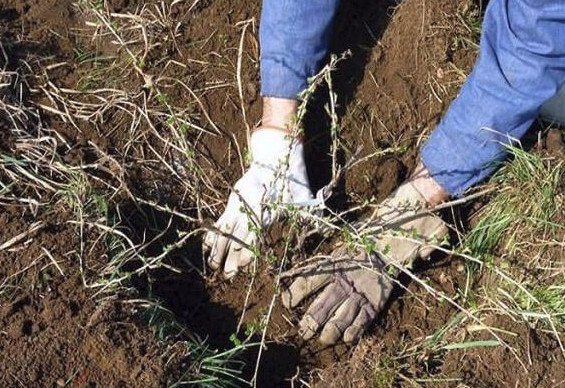

If you notice that the seedling is in the sun, and the roots are dry, then most likely this bush is dead and will not grow in the future. If the seedling is already an adult (2 years or more), then it must be transported and sold with a lump of earth on the roots.
After examining the roots, it is worth starting with the twigs. Ideally, if they are of medium density, with good spreading. Remember that a biennial plant should have several skeletal shoots up to 15 cm long, and most importantly, fibrous buds.
Important! You should not choose gooseberry seedlings older than 2 years for planting - an annual plant remains the best option for engraftment in a new area.
Harvesting and storage
The period for picking Grushenka berries begins at the end of June, at the stage of technical ripeness. Such fruits are intended for processing and are suitable for long distance transportation. Until the beginning of August, fully ripe gooseberries with pronounced varietal characteristics and dessert taste are harvested for fresh consumption. Ripe berries are sorted, selecting healthy ones with intact skin, dried and placed in plastic, wooden or wicker containers with a volume of not more than 2.5 liters. In a cool place, the boxes are stored for up to 4 days. At a temperature of 0 ° C, the shelf life of berries increases to 1.5 months.
Grushenka, an unpretentious gooseberry in care, compares favorably with competitive varieties by its high winter hardiness, strong immunity and original pear-shaped fruits. An easy-to-grow shrub will bring joy and aesthetic pleasure with the decorative appearance of purple berry garlands and safe harvesting from thornless branches.
Ripening time and transportation
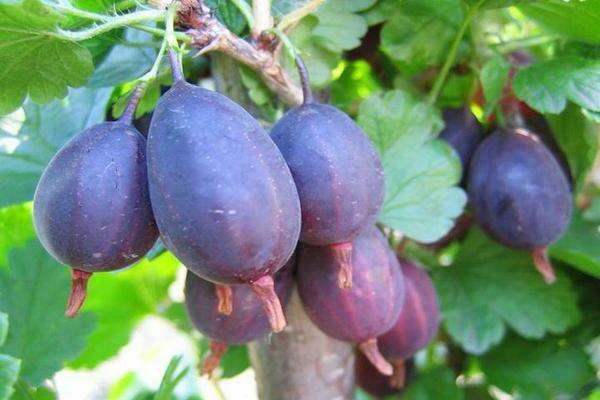

This variety has an average maturity. The bush begins to bloom from the end of the spring period. At the 20th of the second month of the summer period, the berries begin to ripen.Gooseberries bear fruit until the second half of the third month of the summer period. Fruits rarely crack right on the bush. Because they are protected by a rather thick skin. This will allow the summer resident to harvest at a convenient time. And they are also not afraid that the berries will crumble.
Since this variety is unpretentious and fertile, it is usually grown for sale. Berries retain their appearance for a very long time. Because the rind is quite dense. It provides protection for the berry. This variety is excellent for transportation.
Gooseberry: care in spring
Like any other plant, a fruiting bush needs care. It is necessary to systematically remove all weeds, loosen the soil, carry out top dressing, watering, pruning. The root system of the bush is small, so it is shallow. In hot weather, moisture from the upper soil layer quickly evaporates, so the bush must be thoroughly watered, preventing the root system from drying out. To get a good harvest, Grushenka's gooseberry is watered in early spring, during the ovary period. At the same time of the year, before bud break, it is recommended to apply nitrogen fertilizer under the bush. A year after planting in the autumn, you can add phosphate-potassium and organic fertilizers under the bush. In order for the gooseberry branches not to interfere with the care of the bush, they must be lifted from the ground using props.
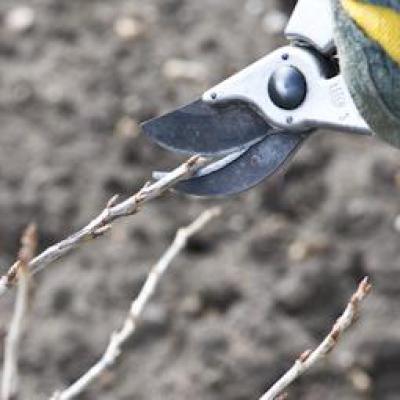

Characteristics of berries and bushes
Gooseberry Commander - features and characteristics
Description of the bushes:
- gooseberry leaf shape is rectangular;
- falling shoots;
- average height of about 200 cm;
- the branches have a dense green mass;
- leaves with a classic glossy surface and reticular veins;
- inflorescences appear in 2-3 buds.
Description of berries:
- oval shape, elongated, slightly expanding at the bottom of the fruit;
- average yield per year - 6 kg;
- the weight of each berry reaches 5 g.
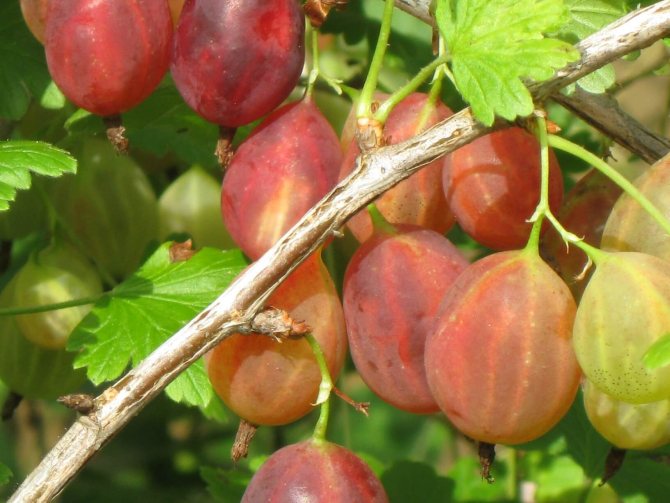

The color of the berries changes during ripening from green to red-purple
Growing conditions
Gooseberry varieties Grushenka are grown on almost any soil composition. The most preferred soil is loam. It is advisable to plant gooseberries in loose, nutritious soil with neutral acidity.
An adult plant does not tolerate transplanting well, so you should immediately take care of choosing a permanent place. The shrub is planted in a lighted place, light partial shade is allowed. To protect the seedlings from wind and drafts, you can place Grushenka's plantings along the fence. Vegetable crops are considered the optimal predecessors of gooseberry. You should not plant bushes after currants.
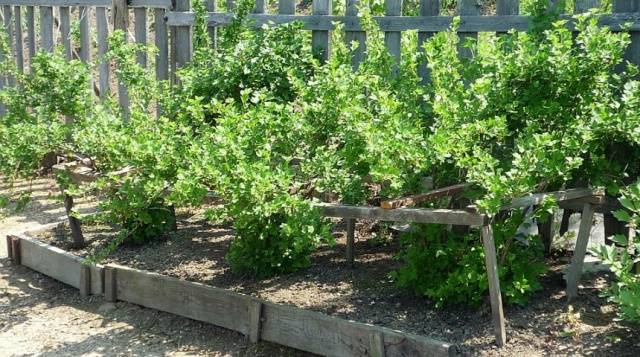

Shrub care
To increase the efficiency of fruiting and development of the "grushenka" variety of bushes, you need to learn a few tips for care. In general, this variety is very unpretentious, sometimes it bears fruit even without the intervention of a gardener. It will not hurt to regularly loosen the soil. This can be done with a pitchfork or a special ripper. This procedure increases oxygen access to the roots.
Gardeners do not allow weeds to grow near the gooseberry. Do not allow them to suck out nutrients from the bushes and contribute to an increase in moisture near them. Moisture for gooseberries is a breeding ground for viral diseases.
Water the plant often, but not abundantly. Thinning of bushes is carried out very rarely, since they hardly thicken. In early spring, dry and old branches are cut.
